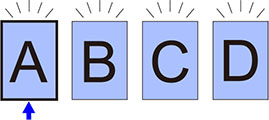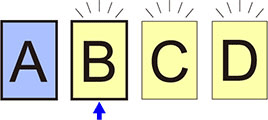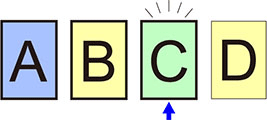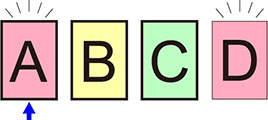Adjustment Types of Color Calibration
Adjustment Types of Color Calibration
Color calibration allows you to adjust colors for each media type.
There are two adjustment types: common calibration and unique calibration. The appropriate type depends on the media type being used.
For details on whether or not color calibration can be executed and the adjustment types for various types of paper, see Paper Information List.
Features
- Common Calibration
-
When you perform color calibration on paper using common calibration, the results are also applied to any other media types which have not yet been calibrated.
This allows you to use multiple media types quickly because it is not necessary to execute color calibration for each media type.
-
If color calibration is executed on a media type categorized as common calibration, new common calibration adjustment values are set.
- New common calibration adjustment values are set for paper for which color calibration has not been performed.
- New common calibration values are not overwritten for media types for which color calibration has already been performed. The current calibration adjustment values take priority.
The common calibration adjustment values apply to all print qualities.
 Note
Note- When common calibration is performed on multiple paper types, different calibration adjustment values are applied to each paper type. We recommend using only one paper type for the common calibration.
-
- Unique Calibration
-
When you calibrate a media type using unique calibration, only the selected paper is adjusted. Other media types are not affected.
-
If color calibration is executed on a media type categorized as unique calibration, new unique calibration adjustment values are set specifically for the paper.
 Note
Note- If color calibration has not been executed, any newly set common calibration values will be applied.
-
 Note
Note
-
If the paper being used does not support color calibration, execute color calibration for a media type categorized as common calibration in advance. The common calibration adjustment values even apply to the paper being used.
Example: Execute color calibration with the default settings
The following describes adjusting media types A to D. A, B and D use common calibration, and C uses unique calibration.
-
First: Execute color calibration with media type A (categorized as common calibration)

- The calibration adjustment value of media type A is also applied to B to D for which color calibration has not been performed.
-
Second: Execute color calibration with media type B (categorized as common calibration)

- The calibration adjustment value of media type B is also applied to C and D for which color calibration has not been performed.
- Media type A is not changed from the first directly set adjustment value.
-
Third: Execute color calibration with media type C (categorized as unique calibration)

- The calibration adjustment value of media type C is set.
- Media types A, B and D are all unchanged from their current calibration values.
-
Fourth: Execute color calibration again with media type A (categorized as common calibration)

- The calibration adjustment value of media type A is also applied to media type D for which color calibration has not been performed.
- Media types B and C are unchanged from their current calibration values.
 Note
Note
-
You can confirm the currently applied calibration adjustment date and the executed paper type with Adjustment information in Color calibration on the touch screen menu.
